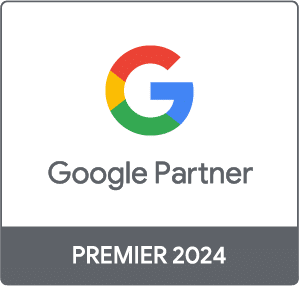Google Marketing Live is the annual event where Google celebrates marketers, announces big new directions in both ads and other products, and creates a lot of buzz and excitement for the advertising industry.
Here are 8 of the top changes to Google Ads from Google Marketing Live 2019.
1. Feed-based advertising gets a facelift with Discovery Ads

We look at feeds on our phones every day and Google wants to get your message in front of those eyeballs.
You may remember Google unveiling Google Discover this past September. Now, they’re introducing a new way to advertise on it. Discovery ads provide an open canvas for advertisers to engage consumers in a swipeable image carousel.
Out of the box, Discovery ads offer plenty of reach—you can serve them across the YouTube home feed, Gmail promotions tab, and the feed in Google Discover. They also leverage machine learning to, over time, deliver the best ad to your prospects.
85% of online consumers take a product-related action within 24 hours. Discovery ads take advantage of that by allowing advertisers to show ads to prospects in the moments when they’re most open to finding something new. And they’ve done so to some legitimate early success. Online subscription fashion retailer TechStyle has experienced a 25% lower cost-per lead using Discovery Ads compared to other channels.
Be on the lookout: this ad type rolls out to advertisers late 2019.
2. Search ads not just text with Gallery Ads

Commercial intent on the search network is unmatched—but what about visual creative? This year, Google set out to combine the intent of search with a more interactive and visual ad format. Gallery ads allow advertisers to combine compelling images and copy to serve prospects their offering on the search network.
Like Discovery ads, Gallery ads exist in the carousel format and allow consumers to seamlessly swipe through your image creative. Unlike Discovery ads, they sit at the top of the search results page. That means advertisers now have the ability to not only show ads to prospects at the precise moment they’re searching for keywords related to their products or services; but show those same prospects the kind of legitimately immersive image creative that is going to induce clicks. As for the specs, Gallery ads let advertisers feature:
- Between 4 and 8 images
- A 70-character tagline with each image
- And up to 3 headlines (for CTA experimentation!)
On average, campaigns that leverage Gallery ads have experienced an increase in user interactions of up to 25%. They also roll out to advertisers later this year.
3. Improvements to smart bidding
One of the three “meaningful revolutions” discussed at the beginning of the keynote was machine learning—a term you can’t escape in the digital marketing world that refers to the power of computers to find patterns in data and make informed decisions based on those patterns. Of the many ways Google is implementing machine learning across its advertising properties, one of the most prominent is smart bidding.
Smart bidding, otherwise known as auction-time bidding, refers to Google Ads’ use of machine learning to optimize your bids for conversions or conversion value. If you’ve ever automated your bidding with Target CPA, Target ROAS, Maximize Conversions, or Enhanced CPC, you’re familiar with smart bidding.
Happily, this year’s keynote included the announcement of three big improvements to the smart bidding suite:
- Campaign-level conversion goals: If you have a campaign dedicated to a single conversion goal—increasing in-store visits, for example—you can now optimize all of your bids within the campaign for that goal.
- Conversion action sets: If you want to optimize your bids across several campaigns, you can create a set of desired conversion actions.
- Seasonality adjustments: If you have an upcoming sale or event that you expect to increase conversion opportunities, Google Ads will optimize your bids for that time period and return them to normal afterwards.
As useful as machine learning is, it’s very much a work-in-progress. This suite of updates certainly seems to be a step in the right direction.
4. YouTube bumper ads for everyone!
YouTube is a commanding platform when it comes to serving inspiring and creative ads. One of the most successful formats are the YouTube Bumper Ads and these little 6 second ads will soon be made available to all!
According to data that Google collated last year on a global scale – Three 6 second Bumper Ads carry more advertiser value that one 30 second ad.
Wouldn’t you love the opportunity to grab the attention of people for 6 seconds as opposed to trying to keep their attention for a watered down 30 seconds or more?
That being said, there aren’t many businesses out there who can create a professional, snappy and highly engaging 6 second ad… until now! Google are launching the “Bumper Machine”!
The Bumper Machine will sit within the Google Ads interface and provide the capability to convert any 90 second or less video into a collection of YouTube Bumper Ads. This tool will be rolled out later in 2019 and is expected to come with a selection of basic editing tools to give the opportunity to add those finishing touches to the end products.
5. Custom affinity + custom intent = custom audiences
Although the conventional wisdom is that Facebook Ads—not Google Ads—is the premier audience-based platform, that’s been gradually changing over the past few years. Unsurprisingly, this year’s keynote kept that trend in motion. Case in point: Google is merging custom affinity audiences and custom intent audiences to create, quite simply, custom audiences.
A quick refresh is in order. Whereas a custom affinity audience enables you to target a group of people who demonstrate a specific, shared interest, a custom intent audience enables you to target a group of people who demonstrate commercial interest in a specific product or service.
That distinction is going away. Soon, the ability to target prospects based on their interests and behaviors will be housed under the custom audiences umbrella. A key difference between this and a Facebook custom audience, of course, is Google’s direct access to search data.
6. The audience expansion tool – Want more audience?
The Audience Expansion Tool brings the capability to expand on your custom audiences by reaching those who look and behave like the targeted people within your custom audience groups.
This means you can expand your reach further beyond the requirements of your custom audience targeting by rolling out ads to individuals who might not fully fall into your requirements, but who would find your ads relevant to their needs. This could include people who are at varying stages of the purchase funnel, one time purchasers or perhaps people who have moved away from using a particular product but are now thinking of coming back (Google will see the triggers based on their online activity).
For those of you who are familiar with Facebook’s Lookalike Audiences, you will likely already know and understand the marketing power this tool can bring.
7. Google Shopping, the place to go when you are… Shopping
One of the most prominent developments in the ecommerce world is the emergence of shoppable content. Only a few months ago, Instagram unveiled Checkout on Instagram—a new functionality that allows users to buy stuff directly within the app. Shortly thereafter, Google announced a pilot version of shoppable image search results. The common thread tying these two features together is the elimination of friction. In other words, advertising vendors want to make it less painful for your prospects to become your customers.
Presumably, that’s why Google is now enabling online shoppers to make purchases directly within the Shopping interface. They’ll still have the option to click through to your website if they’re so inclined, and Google guarantees that all shoppers will enjoy an easy returns process and top-notch customer service.
8. Shopping in more places
In line with the theme of delivering relevant ad experiences, the importance of understanding user intent came up repeatedly throughout the keynote. More specifically, Google emphasized the importance of using visual imagery to inspire consumers whose search queries indicate that they’re hoping to discover new products. That’s why they rolled out showcase shopping ads in late 2017, and that’s why they’re expanding showcase shopping ads to additional ad properties this year.
For those who don’t know, whereas a standard shopping ad brings users to a landing page, a showcase shopping ad brings them to a catalog of related products. The idea is that these users are searching for inspiration and, therefore, can benefit from exploring an array of options.
In the coming months, Google will expand showcase shopping ads to the image search results, the discover search results, and YouTube. The reason this expansion is so exciting is that it enables you to deliver those discovery-based shopping experiences at a broader range of high-funnel touchpoints.
What Next?
Now the waiting begins. Being on the bottom side of the world often means we are either first to get something (we are the testing ground) or last to get something. Many of the innovations we have seen come out of previous Google Marketing Live events have still not reached our shores.
For those new features that do make it hear over the coming months, there will be a significant first mover advantage to those businesses that jump on board.
We love helping clients use the latest ad features that will help there business. So if you need help implementing these please give us a call on 0800 001 925.






